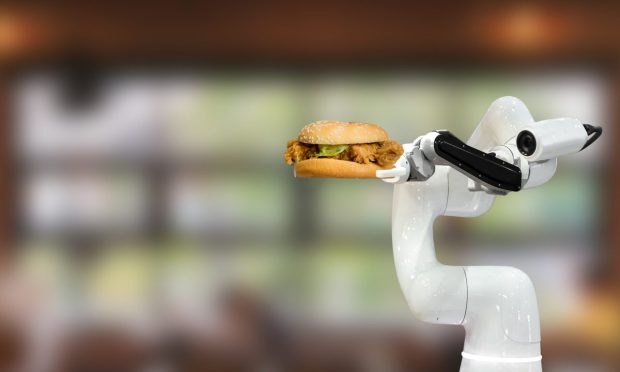SJW Robotics CEO: Delivery Boom Paves the Way for Robotic Restaurants

As automation sweeps across industries, restaurant businesses are taking note. Food delivery giant DoorDash acquired food robotics company Chowbotics earlier this year, Sweetgreen acquired robotic restaurant Spyce, and companies promising to automate labor-intensive kitchen processes are bringing in funds by the tens of millions. Where once the idea of a robot preparing the food may have been an off-putting one to many restaurant customers, now the rise in digital ordering has set consumers at a remove from what is happening in the kitchen, allowing automation to take hold.
Related news: DoorDash Acquires Robotic Food Prep Company
Restaurants Adapt For Workforce With Fewer Humans, More Robots
“Consumers want good food at a good price, and the reason cloud kitchens have become popular is, they don’t really know where the food is coming from,” Nipun Sharma, CEO at SJW Robotics, told PYMNTS in an interview. “People want food delivery. People want value … As long as people are ordering food delivery and takeout, they’re ready for [this technology].”
SJW Robotics is working on creating a fully robotic restaurant, which is set to debut in the fall with a pre-commercial demonstration, slated for its commercial launch in the early months of 2022. The company’s “Rowok” system will prepare stir-fried wok meals, able to complete 75 orders in an hour. Meals will be available for delivery or for self-serve ordering at restaurant kiosks on-site.
Making More out of Less
The demand for kitchen automation is especially pronounced now, as operators struggle to staff their restaurants. Sharma noted the labor challenge in his previous restaurant project back in early 2019.
“I started contacting all these companies in the food tech space and robotics and tried to see if there was doing something that I could use,” he recalled. “After a good search and talking to dozens of companies all over the world, we reached the conclusion that there was nothing viable, at least in terms of my needs, out there.”
The Rowok system will both create meals and clean itself, eliminating a huge amount of the work required to operate a restaurant. Human operators refill ingredients and do some light maintenance, but for the most part the equipment will be remotely monitored.
SJW’s solution will have the advantage of saving on real estate in addition to labor. Since it is a self-contained unit with a footprint of around 100 square feet, it is an order of magnitude smaller than the average restaurant kitchen. Sharma envisions these kiosks in airports, universities, and other locations where one would typically find grab-and-go food kiosks.
Ghost Kitchen vs Robo-Kitchen
While SJW’s kiosks can function as ghost kitchens, removed from consumers, Sharma argues that the company has an advantage over many of the major ghost kitchen companies, whose models involve placing kitchens in low-trafficked areas, straining delivery radii.
“We can be very close to consumers,” he said. “We are really optimized for delivery in terms of our manufacturing costs our occupational costs and employee costs are pretty much zero. That means we have a wide berth of margin to do deliveries.”
He added that, even when the company’s system is not stationed to be viewed by consumers, it can be right in the buildings — he cited hospitals and universities as possible locations — in which consumers are ordering.
Piece by Piece or All at Once
Sharma believes that the savings on real estate and the fact that the machine completes every step of the cooking process sets SJW’s technology apart from other robotic solutions gaining in popularity, most of which are meant to be integrated into restaurants’ existing kitchens.
“A lot of companies will focus on robotic arms, and what have you, and that’s really good-looking, fun project, but it serves no purpose in an actual restaurant where we have to do multitasking,” he said. I don’t think a kitchen like flippy is a serving a real need, or some of these pizza robotics companies that came out of performing a very limited function, but I think almost all of them are heading in the right direction that certain elements can be automated.”
There is a case to be made that solutions which can be utilized right now or in the near future serve a vital role that technology such as SJW’s, which is still in the earlier stages. Spyce, for one, has been preparing meals for years. Given the longer timeframe on which SJW is operating, the company has had a harder time raising funds than some of the solutions that are more ready to go to market.
“It was difficult to raise capital,” Sharma said. “We didn’t have a simple robotic cam to show people, and people didn’t fully understand the complexity of the machine we were creating so a lot of VCs said, ‘Well, let’s wait till the prototype before we invest.’”
He added that it took the company longer than expected to raise the million dollars it needed to create the prototype, though now the company is “back on track” to complete its pre-commercial unit.
